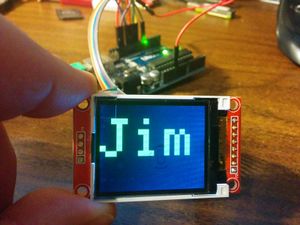Main Page: Difference between revisions
No edit summary |
No edit summary |
||
| Line 3: | Line 3: | ||
==[[MediaWiki]]== | ==[[MediaWiki]]== | ||
==[[Network Attached Storage - NAS]]== | ==[[Network Attached Storage - NAS]]== | ||
==[[Install VNC Server - TightVNC]]== | |||
==[[Forge Minecraft Server]]== | ==[[Forge Minecraft Server]]== | ||
==[[Bukkit Minecraft Server]]== | ==[[Bukkit Minecraft Server]]== | ||
Revision as of 21:22, 7 January 2019
Raspberry Pi
Amazon Web Service - AWS
MediaWiki
Network Attached Storage - NAS
Install VNC Server - TightVNC
Forge Minecraft Server
Bukkit Minecraft Server
Google AIY Project
Embedded Projects
STM32F103C8 (Blue Pill)
Arduio Projects
Blinky
Blinky is often the first program used to begin learning the Arduio environment and to test the development board to verify a program can be written, compiled, downloaded, and executed. Blinky is available in the Arduio menu under {{#if:|{{#ifexpr:({{#time:U|{{{3}}}}} - {{#time:U|now}}) > 0|File->Examples->01.Basics->Blink|File->Examples->01.Basics->Blink}}|File->Examples->01.Basics->Blink}}.
Key APIs (functions)
- pinMode(LED_BUILTIN, OUTPUT);
- digitalWrite(LED_BUILTIN, HIGH);
- delay(1000);
ASCIITable
ASCIITable is rather boring, but provides an example of how to use the Arduino's serial port to send messages to the console window (or to any serial terminal program.) Since the Arduino platform doesn't provide a debugger, it's often required to add serial print statements into your program to see how the program is progressing, and to see what the values of certain variables might be. ASCIITable is available in the Arduio menu under {{#if:|{{#ifexpr:({{#time:U|{{{3}}}}} - {{#time:U|now}}) > 0|File->Examples->04.Communication->ASCIITable|File->Examples->04.Communication->ASCIITable}}|File->Examples->04.Communication->ASCIITable}}.
Key APIs (functions)
- Serial.begin(9600); // Use 9600 for the serial port data rate (9600 and 115200 are very common values) Be sure to tell your Arduio console window the data rate (baud) you selected here.
- Serial.print("Fred"); // Display the text, "Fred"
- Serial.println("Some text to display"); // Display the text, "Some text to display", and begin a new line below it
- Serial.write(thisByte); // Display the ASCII representation of the byte, "thisByte"


Consult the User's Guide for information on using the wiki software.